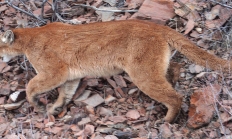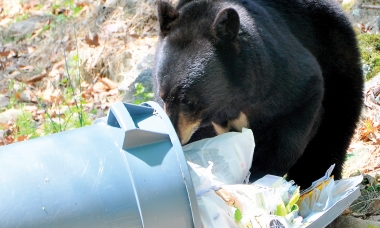
Search myodfw.com


Whether you ’re turkey hunting with a bow or shotgun, you’ll need to know when to take the shot. If you’re using a shotgun, the best shot will be at the head, preferably when it’s outstretched away from the bird’s body. Bowhunters will want to know something about turkey anatomy so they’ll recognize when they have a clear kill shot to a vital organ. Make sure it’s safe to shoot In addition to having a good shot at a bird, you’ll want to make sure there are no other hunters, livestock or other turkeys nearby that you could hit by

Turkeys are some of the best tasting game birds we hunt. The key to eliminating any “gaminess” in the meat is to take proper care of it in the field. After your shot, you’ll want to field dress your bird as quickly as possible. The goal is to cool the bird down by removing its internal organs and allowing air to circulate in the body cavity. Gutting a turkey All you need to gut a turkey is a simple pocket knife. Cut through the thin skin of the stomach from the bottom of the breastbone to the anus. Keep your

Wild turkeys can be eaten either fresh or aged. It all comes down to personal preference, and there are adherents on both sides. Why and how to age a turkey Aging is a process by which changes in muscle enzymes tenderize the meat, and concentrate the flavor. Many hunters prefer to age their meat – both big game and game birds. Others adhere to the motto “fresh birds are the best birds.” Aging is particularly helpful in tenderizing the meat of older toms. If you choose to age your bird, here are some tips: Wild turkey can be aged right


The Bureau of Land Management maintains a series of pastures along Oregon Highway 38 that are a year-round residence for a herd of 60-100 Roosevelt elk. Elk are visible almost every day of the year!


ODFW staff in The Dalles contacted the local trash service provider for approval to modify trashcans. Please do not lock your trashcan or service providers may charge a “locked fee.” Use a carabiner instead. Your trashcan must be strong enough for a bear to stand on. Test yours before modification. If it collapses or the lid bends easily, it will not keep a bear out. Materials and Tools • (1) Heavy-duty Trashcan • (16) #10-24 x 3/8" Nuts • (16) 3/8" Washers • (16) #10-24 x 3/8" Machine Screws • (2) Steel Fixed-Eye Hasps (hinged or flat)* • (1) Wrench


Statewide

Oregon requires all hunters under the age of 18 to complete a hunter safety education course before hunting in the state. Upon course completion, students will receive a temporary Hunter Safety certification card to be carried while hunting in Oregon until a permanent card is received in the mail to replace it. Hunters over 18 are encouraged to take the online education course, as it may be required for out of state hunts. Note: Youth under the age of 9 may struggle with the course material and may not have the physical strength needed to safely handle a firearm during
Oregon requires all hunters under the age of 18 to complete a hunter safety education course before hunting in the state. Upon completing the course (and a Field Day for youth), participants will receive a Hunter Safety certification number and card. Adults are also encouraged to take the online course, as it may be required for out of state hunts. Note: Youth under the age of 9 may struggle with the course material and may not have the physical strength needed to safely handle a firearm during a Field Day, particularly during muzzle control, loading, and unloading drills.
Statewide

